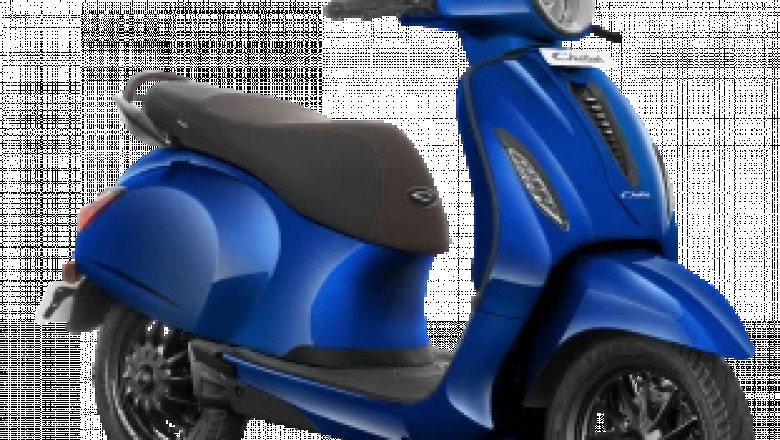views

However, one of the primary concerns for riders is understanding the distance they can achieve on a single charge. This distance is referred to as the electric scooter range.
Uncertainty around the electric scooter range manifests as range anxiety, i.e., the fear that the vehicle may run out of battery charge before reaching its destination or a charging station. As range anxiety can have a negative effect on the adaptation rates of electric vehicles, it’s important to gain complete information about the electric scooter range of your choice.
In this article, we'll delve into the factors that affect electric scooter range and provide insights into how you as a rider can maximise your scooter's range for optimal usage.
Factors Affecting Electric Scooter Range
The electric scooter range can be influenced by several factors:
- Battery Capacity
The capacity of the battery is a primary determinant of the electric scooter range. Scooters with larger battery capacities typically have longer ranges. For instance, Chetak is a leading manufacturer of electric scooters in India. Its Urbane 2024 model is equipped with a 2.9kwh battery which offers a range of 113 km on a single charge. The Chetak Premium 2024 model on the other hand boasts a larger battery capacity of 3.2kwh and thus offers a higher range of 126 km.
- Motor Efficiency
The efficiency of the electric motor affects how much power is consumed during operation. High-efficiency motors, like those used by Chetak, can extend the electric scooter range by utilising energy more effectively.
- Terrain
Riding on flat surfaces requires less energy compared to riding uphill or on rough terrain. Hills and rough surfaces can significantly decrease the electric scooter range.
- Speed
Higher speeds typically result in greater power consumption, reducing the overall electric scooter range. Riding at moderate speeds can help maximise range.
- Weather Conditions
Extreme temperatures, strong winds, and precipitation can affect the performance of the battery and motor, impacting the electric scooter range. Cold weather, in particular, can decrease battery performance.
- Tyre Pressure
Proper tyre pressure is essential for efficient energy transfer from the battery to the ground. Under-inflated tyres can increase rolling resistance, reducing the electric scooter range.
- Riding Style
Aggressive acceleration, frequent braking, and sudden changes in speed can increase energy consumption and decrease the electric scooter range. Smooth and steady riding conserves energy.
- Accessories and Modifications
Additional accessories such as lights, phone mounts, or storage compartments may add weight and increase aerodynamic drag, reducing the electric scooter range. Similarly, modifications to the scooter's components can impact its efficiency and range.
Tips to Maximise Your Electric Scooter Range
To maximise your electric scooter range, consider implementing the following tips:
- Choose the Right Scooter
Select a scooter with a larger battery capacity, such as the Chetak Premium 2024 model, if you prioritise longer ranges. Research different models and compare their specifications to find one that suits your needs.
- Maintain Proper Tyre Pressure
Keep your scooter's tyres properly inflated to reduce rolling resistance and improve efficiency. Check the manufacturer's recommendations for the recommended tyre pressure.
- Ride at Moderate Speeds
Opt for moderate speeds to conserve energy and extend your electric scooter range. Avoid rapid acceleration and maintain a steady pace whenever possible.
- Plan Your Route
Plan your routes in advance to avoid steep hills and rough terrain, which can drain the battery quickly. For instance, with the Chetak app, you can enter your location and find the best route possible for easy navigation. Opt for flat surfaces and smooth roads whenever possible to maximise efficiency.
- Monitor Your Battery Level
Keep an eye on your scooter's battery level throughout your ride. If possible, try to maintain a charge level between 20% and 80% to optimise battery lifespan and performance. Leading manufacturers like Chetak allow you to monitor the battery's health as well as locate charging stations through their apps.
- Reduce Wind Resistance
Minimise wind resistance by tucking in your elbows and knees while riding, especially at higher speeds. This aerodynamic posture can help improve efficiency and extend your scooter's range.
- Limit Cargo and Extra Weight
Reduce the amount of cargo you carry on your scooter to minimise additional weight. Lightening the load can improve efficiency and increase your scooter's range.
- Use Regenerative Braking
Take advantage of regenerative braking systems, if available on your scooter. These systems can help recapture energy during braking and coasting, extending your scooter's range.
- Avoid Excessive Stops and Starts
Minimise unnecessary stops and starts by anticipating traffic flow and planning your route accordingly. Smooth, continuous riding conserves energy and maximises range.
- Keep Your Scooter Well-Maintained
Regularly maintain your scooter by cleaning it, lubricating moving parts, and ensuring proper electrical connections. Routine maintenance helps optimise performance and efficiency, resulting in longer ranges.
Get Started on Your Electric Scooter Journey
By understanding the above-discussed factors and implementing the riding tips, you can maximise your electric scooter range and enjoy longer rides between charges. Top electric scooter manufacturers like Chetak can further allow you to enjoy a worry-free ride. As discussed above, Chetak Urbane and Premium 2024 offer an ample range of 113 km and 126 km respectively. Moreover, both these models can be charged quickly to full capacity in just 4 hours and 30 minutes. You can visit Chetak’s website or a local dealership store near you for more information.












